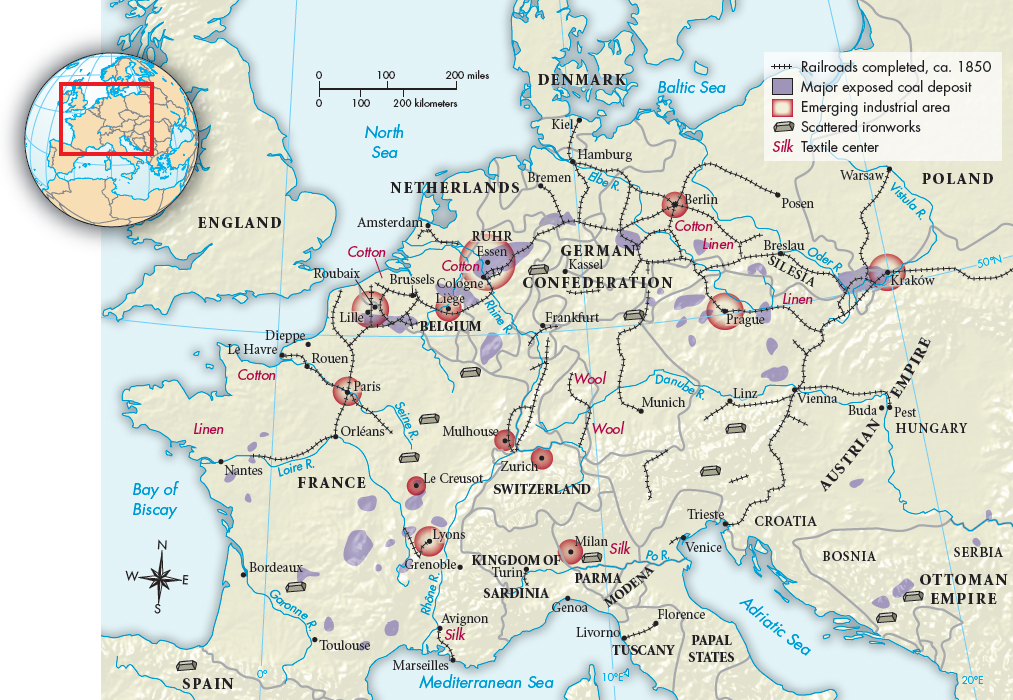Industrialization in Continental Europe
Throughout Europe the eighteenth century was an era of agricultural improvement, population increase, expanding foreign trade, and growing cottage industry. Thus, when the pace of British industry began to accelerate in the 1780s, continental businesses began to adopt the new methods as they proved their profitability. During the period of the revolutionary and Napoleonic Wars, from 1793 to 1815, however, western Europe experienced tremendous political and social upheaval that temporarily halted economic development. With the return of peace in 1815, however, western European countries again began to play catch-
They faced significant challenges. In the newly mechanized industries, British goods were being produced very economically, and these goods had come to dominate world markets. In addition, British technology had become so advanced that very few engineers or skilled technicians outside England understood it. Moreover, the technology of steam power involved large investments in the iron and coal industries and, after 1830, required the existence of railroads. Continental business people had great difficulty amassing the large sums of money the new methods demanded, and laborers bitterly resisted the move to working in factories. All these factors slowed the spread of mechanization (Map 23.2).

Nevertheless, western European nations possessed a number of advantages that helped them respond to these challenges. First, most had rich traditions of putting-